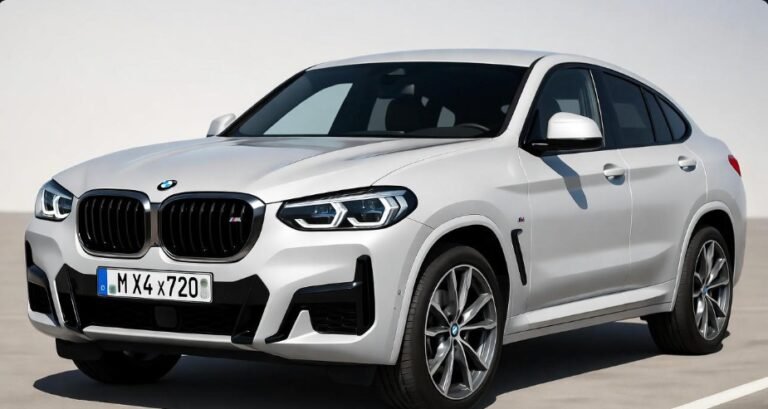Definition of BMW Management: 6 Facts

The definition of BMW management involves understanding how BMW strategically operates its business. It encompasses everything from its product development and manufacturing to its marketing and financial strategies, all aimed at maintaining its status as a leading luxury automotive brand.
Key Takeaways
- Discover BMW’s core business objectives.
- Understand their innovation and technology focus.
- Learn about their global market strategy.
- Explore their commitment to sustainability.
- Grasp their customer-centric approach.
- See how they manage brand loyalty.
When you think of luxury cars, BMW often comes to mind. But how does this iconic German automaker consistently deliver performance, innovation, and desirability? It all comes down to their sophisticated management approach. You might be curious about the inner workings of a company like BMW, especially if you’re a fan of their vehicles or interested in the automotive industry. Understanding the “definition of BMW management” can seem complex, but it’s the driving force behind their success. We’re here to break down the essential elements you need to know. Get ready to explore the six key facts that define BMW’s management strategy.
Understanding the Definition of BMW Management: 6 Facts You Must Know Today

BMW, Bayerische Motoren Werke AG, is a name synonymous with driving pleasure, engineering excellence, and premium automobiles. But behind every sleek line and powerful engine is a meticulously planned and executed business strategy. The definition of BMW management isn’t just about running a car company; it’s about leading a global brand that thrives on innovation, quality, and a deep understanding of its customers. This involves a multi-faceted approach that balances tradition with future-forward thinking. Let’s dive into six crucial facts that illuminate what BMW management truly entails.
Fact 1: A Clear Vision for Premium Mobility and Driving Dynamics
At its core, BMW management is driven by a distinct vision: to be the leading provider of premium mobility solutions worldwide. This vision is not just a slogan; it’s embedded in every decision made, from the drawing board to the showroom. A significant pillar of this vision is the unwavering commitment to “driving dynamics.” This isn’t just about horsepower; it’s about the intricate balance of steering, suspension, braking, and engine performance that creates the characteristic “ultimate driving machine” experience BMW is famous for.
Management ensures that this DNA is present in every vehicle, regardless of its segment. This means investing heavily in research and development to refine chassis technology, engine efficiency, and handling characteristics. They meticulously analyze driver feedback and market trends to ensure that future models not only meet but exceed expectations for performance and engagement. This focus on the driving experience is a critical differentiator that management consistently protects and cultivates.
Product Development Philosophy
The product development process at BMW is highly structured. Management sets clear targets for performance, efficiency, and luxury for each model line. This involves cross-functional teams working collaboratively, from designers and engineers to marketing and sales specialists. The goal is to create vehicles that are not only technologically advanced but also emotionally appealing to their target audience. Key aspects include:
- Performance Benchmarking: Continuously evaluating and exceeding competitor performance metrics.
- Innovation Integration: Seamlessly incorporating new technologies that enhance the driving experience.
- Design Language Consistency: Maintaining a recognizable aesthetic across the model range while evolving it.
This systematic approach ensures that the BMW brand promise of dynamic driving is upheld across its diverse portfolio, from the compact 2 Series to the flagship 7 Series and the growing range of electric vehicles.
Fact 2: Strategic Focus on Innovation and Future Technologies
BMW management understands that the automotive industry is in a state of rapid transformation. Therefore, a key aspect of their definition is a proactive and substantial investment in innovation. This goes beyond incremental improvements; it involves anticipating future trends and developing the technologies that will define mobility in the years to come. Key areas of focus include:
Electrification and Sustainability
BMW has been a pioneer in the electric vehicle (EV) space, with its “i” sub-brand leading the charge. Management’s strategy involves a phased transition towards electrification, ensuring that their EVs offer the same level of performance and luxury as their internal combustion engine (ICE) counterparts. This includes developing cutting-edge battery technology, efficient electric powertrains, and sustainable manufacturing processes. They are committed to reducing their carbon footprint, not just in their vehicles but across their entire value chain.
For instance, the BMW Group has set ambitious goals for CO2 reduction. According to their sustainability reports, they aim to significantly lower emissions per vehicle throughout the entire lifecycle. This strategic push for sustainability is a direct reflection of management’s forward-thinking approach and commitment to responsible corporate citizenship. You can often find detailed reports on their efforts on the official BMW Group website.
Autonomous Driving and Connectivity
Another critical area for BMW management is the development of autonomous driving capabilities and connected car technologies. This involves significant investment in artificial intelligence, sensor technology, and advanced software. The aim is to create safer, more convenient, and more personalized driving experiences. Management envisions a future where vehicles are an integrated part of a connected ecosystem, offering seamless integration with smart homes, digital assistants, and advanced infotainment systems.
These advancements are not just about convenience; they are also about enhancing safety. Features like advanced driver-assistance systems (ADAS) are becoming increasingly sophisticated, leveraging AI and machine learning to predict and prevent accidents. BMW management ensures that these technologies represent the cutting edge of what’s possible, aligning with their premium brand positioning.
Fact 3: Global Market Strategy and Regional Adaptation
BMW is a truly global player, and its management strategy reflects a deep understanding of diverse international markets. While maintaining a consistent brand identity and quality standards worldwide, the company also emphasizes regional adaptation. This means understanding the unique preferences, regulations, and economic conditions of different countries and tailoring their product offerings and marketing strategies accordingly.
For example, in markets where SUVs are highly popular like the USA, BMW has expanded its X-range of vehicles significantly. In regions with stringent emissions standards, they prioritize their electric and plug-in hybrid models. Management continuously monitors global sales data and consumer feedback to make informed decisions about product mix and market penetration.
Key Elements of Global Strategy
BMW’s global market strategy involves several key components:
- Localized Production: Operating manufacturing plants in various regions to reduce logistical costs and cater to local demand.
- Market Research: Conducting extensive research to understand consumer needs and preferences in each target market.
- Strategic Partnerships: Collaborating with local entities where beneficial, such as joint ventures for manufacturing or distribution.
- Brand Localization: Adapting marketing campaigns and communication to resonate with local cultures and values.
This carefully orchestrated global approach allows BMW to maintain its position as a leading luxury automaker across continents, adapting to local nuances without diluting its core brand essence.
Fact 4: Emphasis on Brand Value and Customer Loyalty
A defining characteristic of BMW management is its relentless focus on building and maintaining strong brand value and fostering deep customer loyalty. They understand that a premium brand is built not just on the quality of its products but also on the entire ownership experience. This involves a holistic approach that extends far beyond the initial purchase.
Building Brand Equity
BMW management invests heavily in marketing and brand communication designed to reinforce its image of performance, luxury, and innovation. This includes:
- Consistent Messaging: Ensuring that all communications reflect the brand’s core values.
- Experiential Marketing: Offering opportunities for customers to experience the brand, such as driving events and exclusive previews.
- Digital Presence: Maintaining a sophisticated online presence that engages customers and provides valuable information.
The goal is to create an emotional connection with consumers, making BMW more than just a car, but a lifestyle choice.
Cultivating Customer Loyalty
Customer loyalty is nurtured through several strategies managed by BMW:
- Exceptional After-Sales Service: Ensuring that dealerships provide high-quality service and support, from routine maintenance to repairs.
- BMW ConnectedDrive: Offering advanced digital services that enhance convenience, safety, and entertainment for owners.
- Loyalty Programs: Developing programs and initiatives that reward long-term customers and encourage repeat business.
- Community Building: Fostering a sense of community among BMW owners through clubs, events, and online forums.
By prioritizing customer satisfaction and providing ongoing value, BMW management ensures that owners remain loyal advocates for the brand, driving repeat sales and positive word-of-mouth referrals.
Fact 5: Efficient Operations and Supply Chain Management
The definition of BMW management would be incomplete without acknowledging their sophisticated approach to operational efficiency and supply chain management. Producing complex luxury vehicles requires a highly coordinated and optimized flow of materials, components, and finished products across a global network. Management has implemented rigorous systems to ensure this efficiency.
Lean Manufacturing Principles
BMW is renowned for its application of lean manufacturing principles in its production facilities. This methodology, originating from Japan, focuses on eliminating waste in all its forms – be it overproduction, waiting, transportation, excess inventory, or unnecessary motion. The company’s factories are designed for flexibility and efficiency, allowing them to adapt to changing production demands and introduce new models smoothly.
For example, BMW’s production system, often referred to as the BMW Production System (BPS), emphasizes continuous improvement (Kaizen) and employee involvement. Workers at all levels are encouraged to identify and suggest improvements, leading to ongoing optimizations in processes and quality. This commitment to operational excellence directly impacts cost-effectiveness and the ability to deliver high-quality vehicles on time.
Global Supply Chain Integration
Managing a global supply chain for thousands of parts from hundreds of suppliers is a monumental task. BMW utilizes advanced IT systems and logistics networks to maintain visibility and control over its supply chain. This includes:
- Just-in-Time (JIT) Delivery: Minimizing inventory by receiving parts only when they are needed for production.
- Quality Control: Implementing strict quality checks for all incoming components to prevent defects.
- Risk Management: Developing strategies to mitigate potential disruptions in the supply chain, such as natural disasters or geopolitical events.
This meticulous management of operations and supply chains is a critical, albeit less visible, aspect of BMW’s success, ensuring that the company can produce and deliver vehicles efficiently and reliably worldwide.
Fact 6: Financial Prudence and Long-Term Growth Strategy
Underpinning all of BMW’s operations is a foundation of strong financial management and a clear long-term growth strategy. BMW management focuses on sustainable profitability, enabling continued investment in product development, technology, and market expansion. They carefully balance the pursuit of growth with prudent financial stewardship.
Profitability Drivers
BMW’s financial strategy revolves around several key drivers:
- Premium Pricing: Leveraging brand equity to command premium prices for their vehicles.
- Product Mix Optimization: Focusing on higher-margin models, such as larger sedans, SUVs, and performance variants.
- Cost Management: Continuously seeking efficiencies in production, administration, and R&D to control costs.
- Financial Services: Generating revenue through BMW Financial Services, offering loans and leases to customers.
Investment in the Future
A significant portion of BMW’s earnings is reinvested into research and development, particularly in areas critical for future mobility, such as electrification, digitalization, and autonomous driving. This ensures the company remains at the forefront of automotive innovation. Management also pursues strategic acquisitions or partnerships when they align with long-term growth objectives and technological advancement.
The company’s financial reports, often available through investor relations on their official website, provide detailed insights into their performance and strategic allocation of capital. This disciplined financial approach is essential for navigating the cyclical nature of the automotive industry and ensuring sustained success and competitiveness in the global market.
Pro Tip:
When considering a BMW, research the specific model’s maintenance schedule and typical repair costs. Understanding the long-term ownership commitment is part of smart vehicle management.
BMW Management in Action: A Look at Key Decisions
To further illustrate the definition of BMW management, consider some pivotal decisions and strategic directions:
| Strategic Area | Management Focus | Impact |
|---|---|---|
| Electrification | Investing heavily in EV technology via ‘i’ sub-brand and expanding hybrid options. | Positions BMW as a leader in sustainable luxury mobility, meeting evolving environmental regulations and consumer demand. |
| Digitalization | Developing BMW ConnectedDrive, advanced infotainment, and driver assistance systems. | Enhances user experience, safety, and connectivity, aligning with modern consumer expectations for smart vehicles. |
| SUV Market Dominance | Expanding and refining the X-range of SAVs (Sports Activity Vehicles). | Captures significant market share in a highly profitable segment, catering to diverse consumer needs for space and versatility. |
| Global Expansion | Establishing production facilities and sales networks in key emerging and established markets. | Ensures broad market access, local competitiveness, and resilience against regional economic downturns. |
These examples demonstrate how BMW management translates its core principles into tangible actions that shape the company’s present and future. They highlight a consistent ability to adapt to industry shifts while staying true to their brand identity and commitment to their customers.
Frequently Asked Questions (FAQ) about BMW Management
What are the main goals of BMW management?
The main goals of BMW management include being the leading provider of premium mobility solutions, driving innovation in automotive technology, ensuring financial profitability for sustained growth, and maintaining strong brand loyalty among customers worldwide.
How does BMW management approach sustainability?
BMW management approaches sustainability through a multi-faceted strategy involving reducing CO2 emissions across vehicle lifecycles, increasing the proportion of electric and plug-in hybrid vehicles, using sustainable materials, and implementing eco-friendly production processes. They aim for a comprehensive reduction in their ecological footprint.
What role does R&D play in BMW’s management strategy?
Research and Development (R&D) is central to BMW’s management strategy. It drives innovation in key areas like electrification, autonomous driving, connectivity, and new materials, ensuring BMW vehicles remain competitive, technologically advanced, and aligned with future mobility trends.
How does BMW manage its global operations?
BMW manages its global operations through a combination of localized production facilities, flexible supply chain networks, thorough market research, and adaptable marketing strategies. This allows them to cater to regional preferences while maintaining global quality standards.
What is the “driving dynamics” philosophy at BMW?
The “driving dynamics” philosophy refers to BMW’s core engineering principle of creating vehicles that offer exceptional handling, responsiveness, and a connected feel between the driver and the road. It’s about delivering a superior and engaging driving experience.
How does BMW foster customer loyalty?
BMW fosters customer loyalty through a combination of high-quality products, excellent after-sales service, innovative digital services like ConnectedDrive, and initiatives that build a sense of community among owners. The focus is on providing a premium experience throughout the ownership lifecycle.
Conclusion
Understanding the definition of BMW management reveals a sophisticated and forward-thinking approach that has solidified its position as a global automotive leader. It’s a strategy built on a clear vision for premium mobility, an unyielding commitment to innovation and driving dynamics, astute global market navigation, a strong emphasis on brand value and customer loyalty, efficient operational execution, and prudent financial management. BMW’s management team consistently navigates the complexities of the automotive industry by balancing tradition with cutting-edge technology, ensuring that each vehicle bearing the blue and white roundel continues to embody the “ultimate driving machine” promise. For drivers and enthusiasts in the USA and around the world, this management philosophy translates into vehicles that are not only desirable but also represent the pinnacle of automotive engineering and customer satisfaction.






